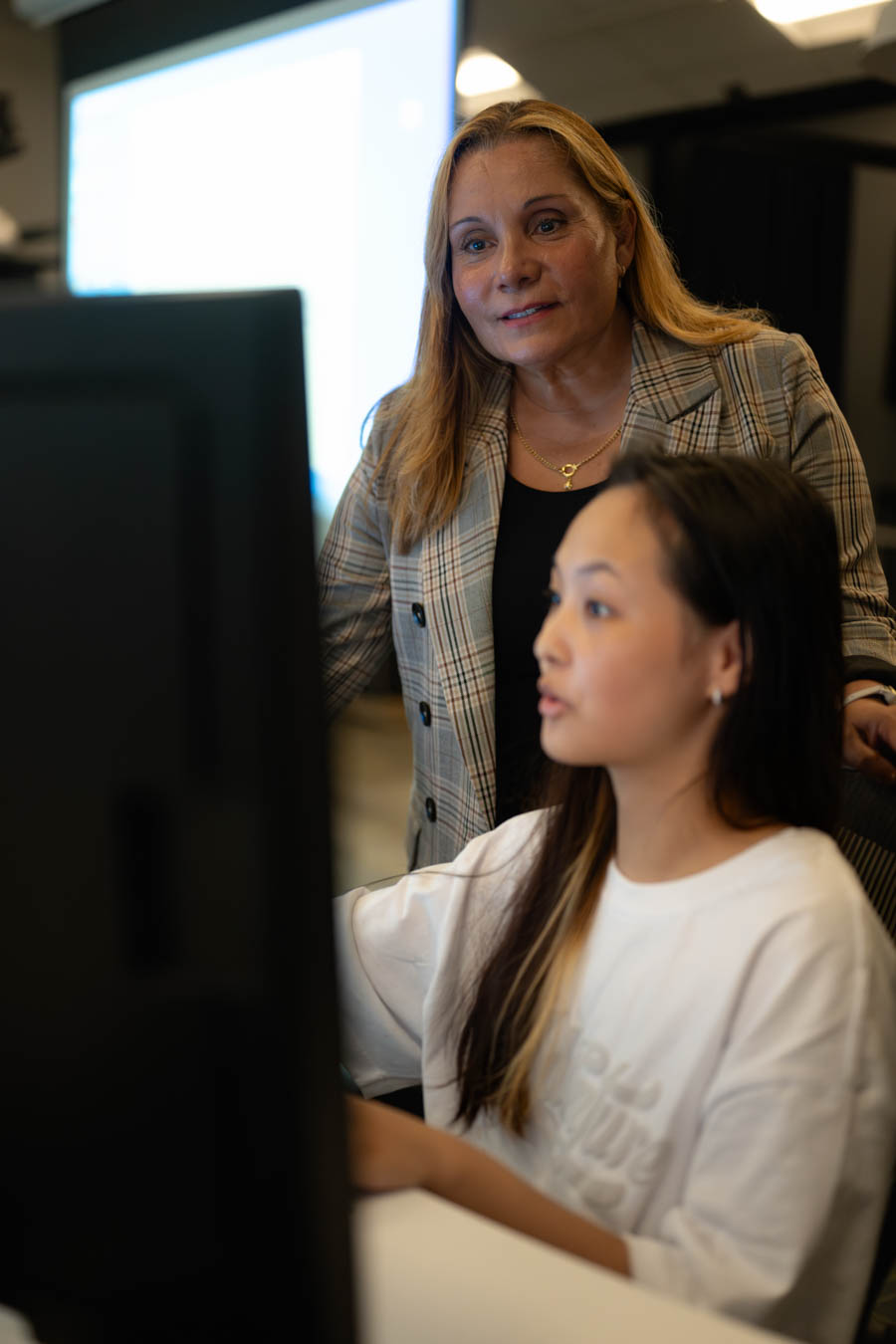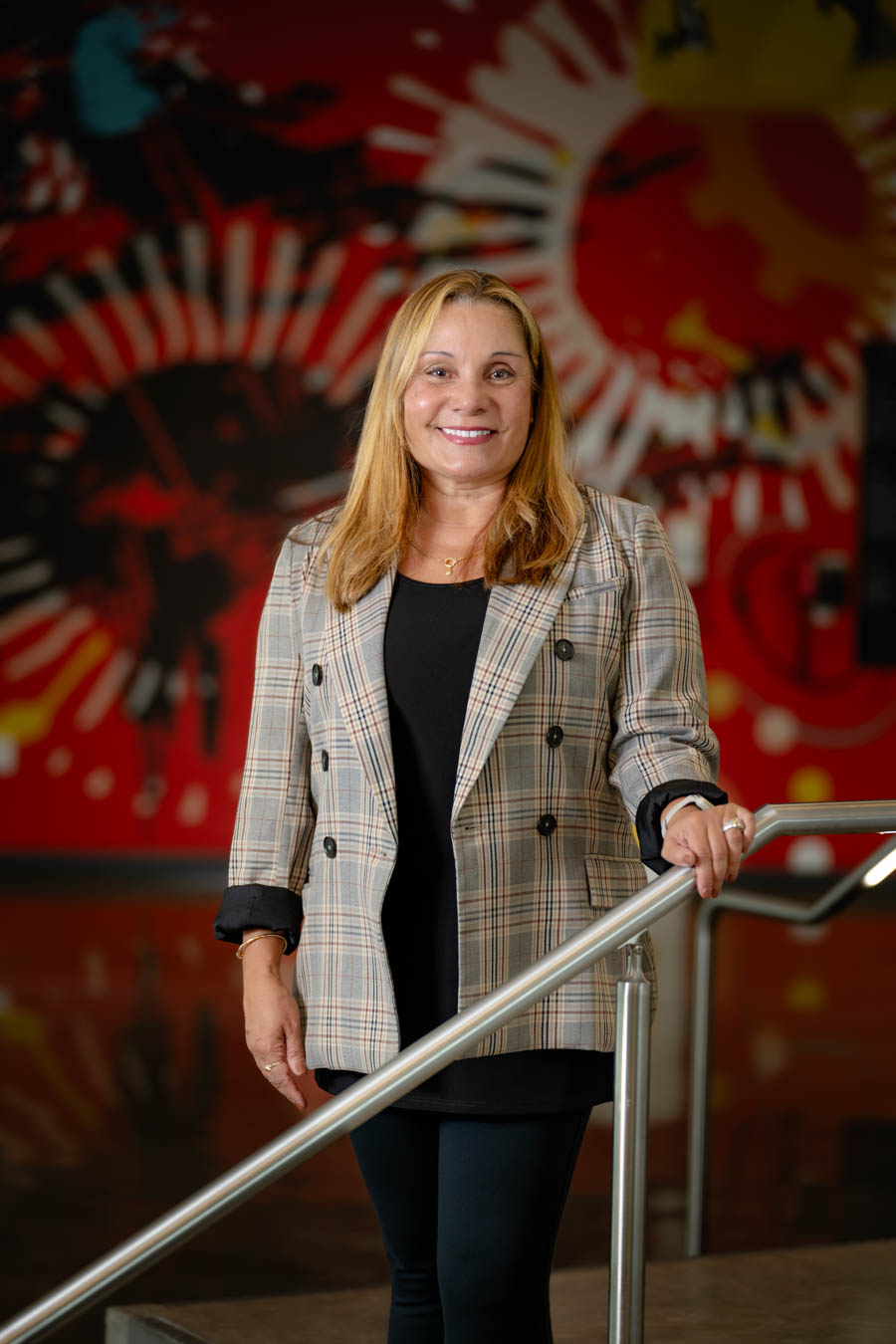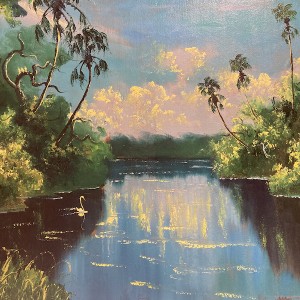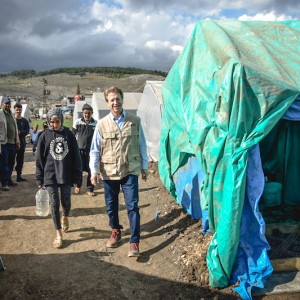Evelyn Miralles, NASA’s former chief engineer for the Virtual Reality Lab at the Johnson Space Center in Houston, Texas visited Ringling College of Art and Design last month to talk about her career with NASA, and discuss the connections and intersections between technologies and the art world. Miralles recently became Founder and CEO of Xploration LLC in 2023, a futuristic tech consulting company specializing in the dynamic intersection of knowledge between “aerospace, technology, and education.” In an interview with Wes Roberts, Miralles talked about her experience and what she sees as opportunities for students interested in art design intertwined with technology.
You are well known for your time at NASA. tell us a little bit about the arc of that career. EVELYN MIRALLES: I worked at NASA Johnson Space Center in Houston, Texas for 27 years, since 1992. I retired in 2019 and went to work for the University of Houston Clear Lake, serving as the vice president for Strategic Information Initiatives and Technology. Since then, I have become the founder and CEO of Xploration. The company concentrates on supporting the industry in aerospace, higher education and general business in terms of technology and new technology applications. I’m here, at Ringling College, doing a presentation and a lecture to students, to discuss the opportunities in immersive technology and applications all related to art design intertwined with technology.
You started in 1992 with NASA, that seems really early in the history of VR. Yes. When I started, I had just finished my college education at the University of Houston. I have two degrees, one in computer graphics, and one in computer information systems. And right at that time in 1992, NASA was looking for computer scientists that had a graphics background and I was selected and went to work for them to support them and create a next generation system to help train astronauts for different activities.
In 1992, how did you find a passion for VR when 3D rendering barely existed? Well, I didn't. That's the fun part about that. NASA realized that the computing power was getting better, hardware was getting better faster, and that the possibility was there to build a graphical twin of whatever space scenario NASA needed for training. NASA decided to begin building the team that would support activities such as spacewalking, robotics operation and spatial awareness outside a space vehicle, and what other way to do it than by using immersive technology. We just needed to build it. When I started at NASA, the first agenda was figuring out how to put all these pieces together to generate some form of a system that could simulate these missions that we were going to start doing. This is NASA's perspective; that they were going to start moving toward the future where they would build an International Space Station. The first mission that I supported with VR was the repair of the Hubble space telescope. The astronaut has to capture this impressive telescope, put it back in the payload bay of the Space Shuttle, and then repair it. And all that activity was rehearsed using VR for the first time ever in history for the space program.
What language were you programming in? C++. Of course it is not just the software, everything is part of a system. On one side, you have the virtual reality environment, the IO, the helmet, that's the immersion part, which is what people think of as VR. Then, for us, we also had the mathematical simulations from different sources, it could be MATLAB or others that actually coordinate how the movements work for the pieces that we send to space. And then we also have the graphic engine, all the inputs for the models and everything that gets built to create this scenario.

Was there a particular moment when this new idea, immersive VR, was suddenly able to approximate reality? Yes and no. The resolution of this scenario is that what we were building [in those early days] and trying to capture was limited by the technology we had. You could always tell it's synthetic, it's not real. But when we immersed astronauts in these systems, they became so acclimated to the visual cues [until it seemed real to them] because every part or component they were turning and looking at existed in space. We made sure to have the earth rotating, we have the lighting of the earth changing to match the pace they would actually experience. These scenarios built with VR for NASA have always been specifically for a specific mission. So you have a target, you have a mission, and [for the astronauts] you have a certain amount of time to do the activity. When you go into space, you have some hours to do this activity, and there is very little room for error, but in our lab you can repeat it, we can do it again and again until the astronaut knows exactly what they need to do to accomplish the mission. Having a very specific goal in a very limited time is different from when you're gaming or you're just enjoying a VR experience.
Do you have specific anecdotes about astronauts' experiences? Our lab was really a small lab. It was only supported by about five to seven individuals, people, engineers. We were all in different areas of computer science or aerospace and electric. We found ways to have fun, because the work was very intensive and could be tedious. So when the astronauts would come to train with us as a team, sometimes they would go up to space and we'd create tricks. We’d add some comical pieces. One time we built a SpongeBob figure and we changed the face to the face of the astronaut. The astronaut was moving in space in VR on the outside of the Space Station, and then suddenly there was SpongeBob looking at him. We did things like that many times just to take off the intensity.
What do you think about that synergy between technology and arts, and what does that mean for the future of the Ringling College? It’s very important. In my own experience, I wanted to be an architect. I had the artistic abilities, but because of my brothers who are engineers, I wanted to educate myself more about other areas and that's when I got into computers. And then at some point I thought it was impossible. I said, "Well, I can't merge computer and art." And guess what? When I was at NASA, one of my biggest influences on the team was the creative side of it. Because even though the technology is all very engineering-related, you need creativity, you need vision. You need to have that potential of observing that comes from the arts. When you're building applications and you build a user interface, it's not just math and physics, but it's also how you interact with the human being.
For many years the president of this school, Larry Thompson, has talked about adding the letter A, for Art, to STEM. So he talks about STEAM, not just STEM. I think this is very important. I’ve always thought that having the interdisciplinary approach sounds very good, but I think at the end of the day, that's an individual choice. Some students will gravitate to that and some other people might not. That's why I do think the humanities has to be offered to students. Some may continue to exclusively take everything technical, and then some others say, "You know what? I do need to paint. I can be creative as well as technical,” Those kids may end up working in something where they use those components, and their combined skills are needed. It's important to offer it, but it's going to differ by individual at the end.
If you want to excite and energize a student about VR or the space industry, what would you say? At this moment we are in the transition into the fourth industrial revolution. This has to do with digitalization of our world. I wouldn't want to say that everything is going to be replaced by something that is not human, but we can definitely create better tools that people can use and make their life easier, faster, better. They can have more time. Maybe we don't work 40 hours a week. Maybe we work less because we use better tools. With VR to train or teach a concept that maybe was difficult before now, we're going to become more intelligent or educated in less time. This is an incredible time for all this technology. The hardware is here, the streaming is here because that's another thing that was missing. How do you stream that data back and forth? I know it's a little sideways, but there was one time we had a meeting with Facebook, Meta now, and they wanted to be the first ones to capture somebody on the moon or an astronaut arriving on the moon. I said, "Well, what could be more exciting than VR?" Can you imagine every child in the world having access to an VR helmet and following an astronaut just landing on the moon real time? Years ago that could have been impossible. But now we have SpaceX sending all these satellites up, literally connecting our world with data. Now we can stream high-quality videos and real-time videos easily to any remote place in the world. Is it good? Is it bad? That's something that we shall discuss in another interview, but it is the future.










